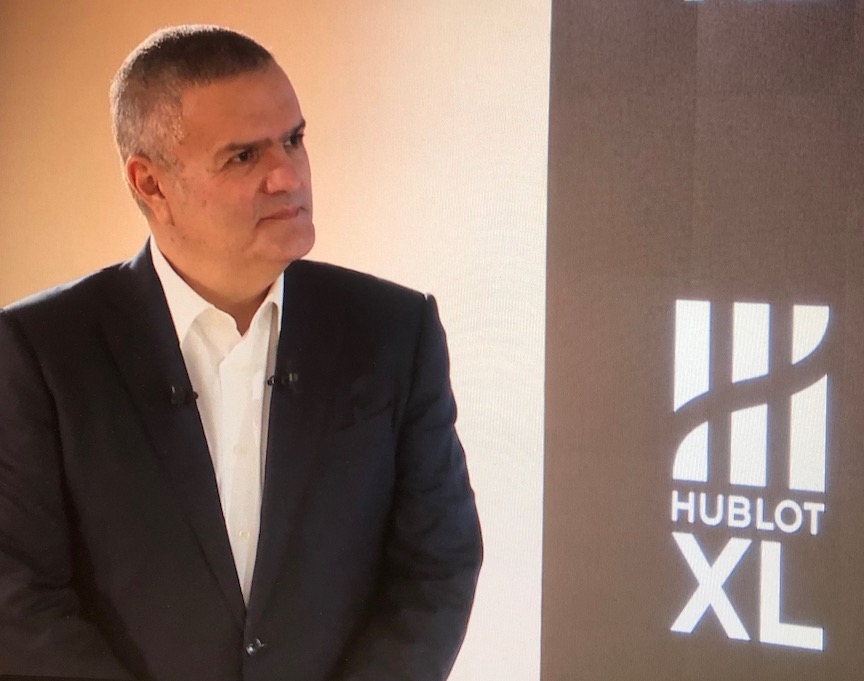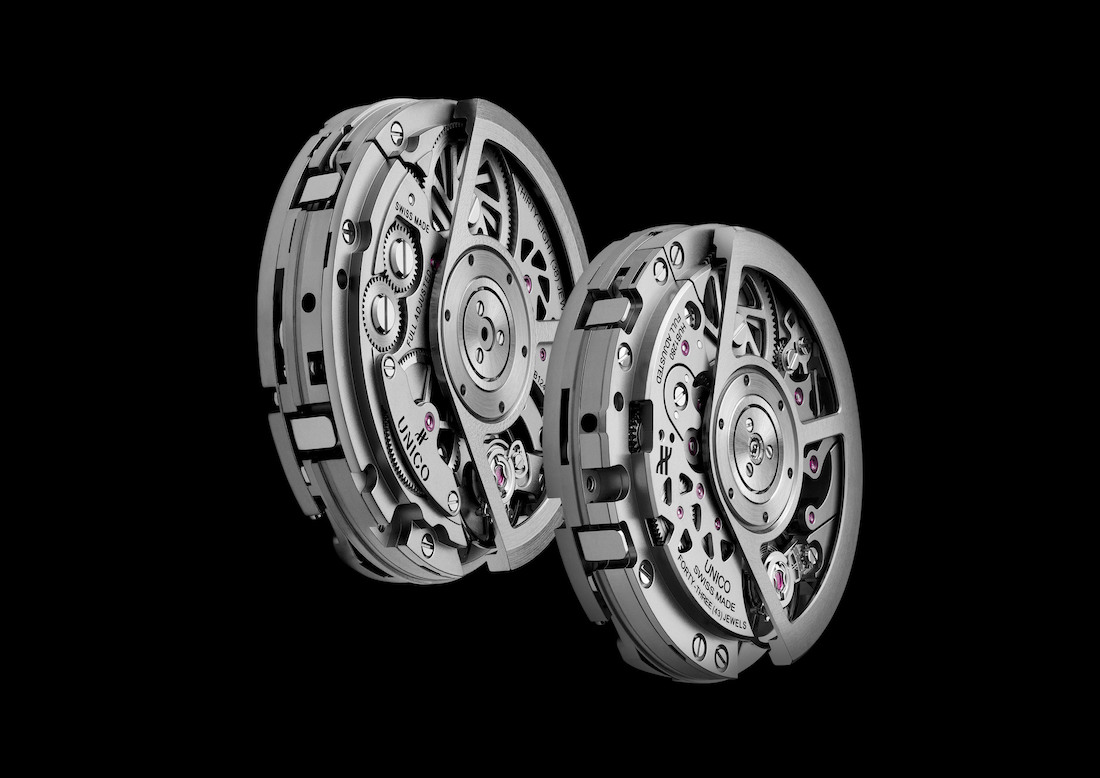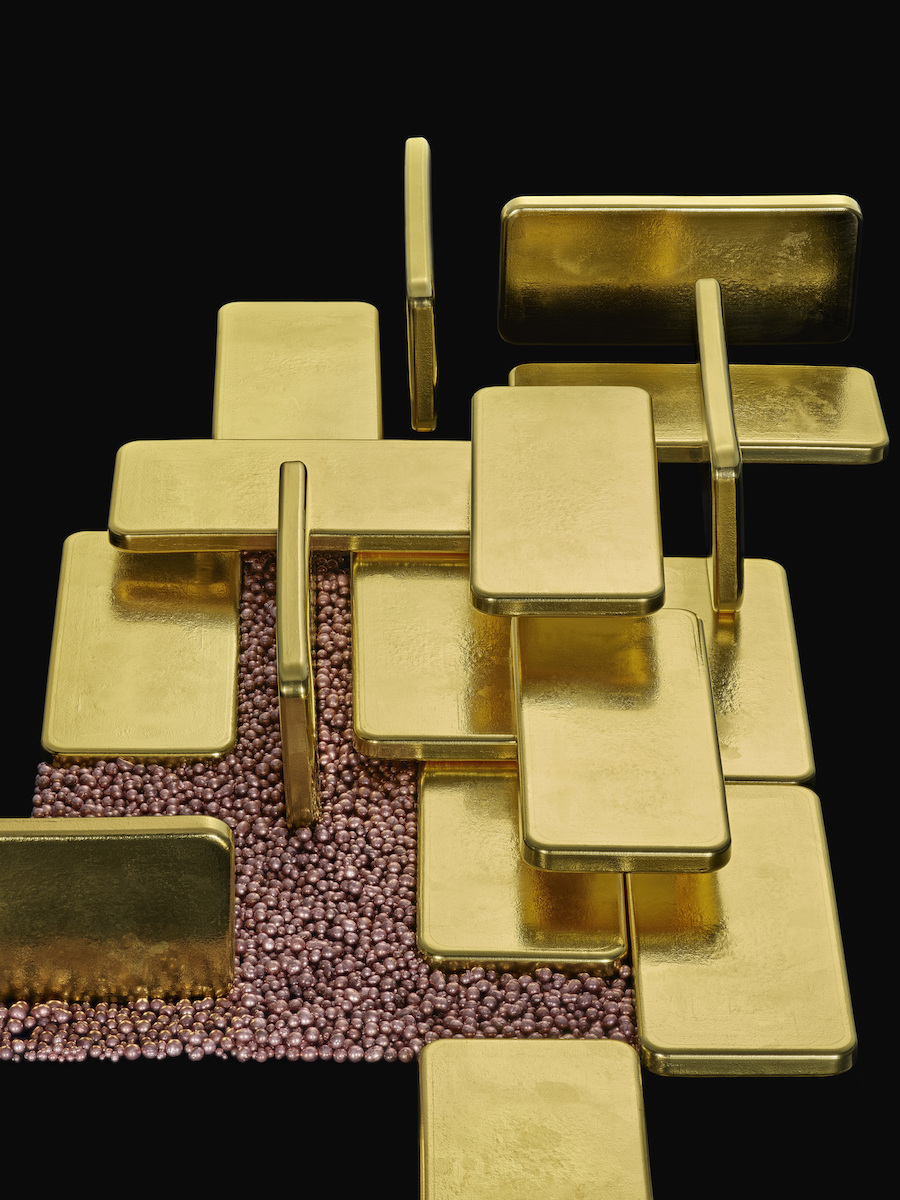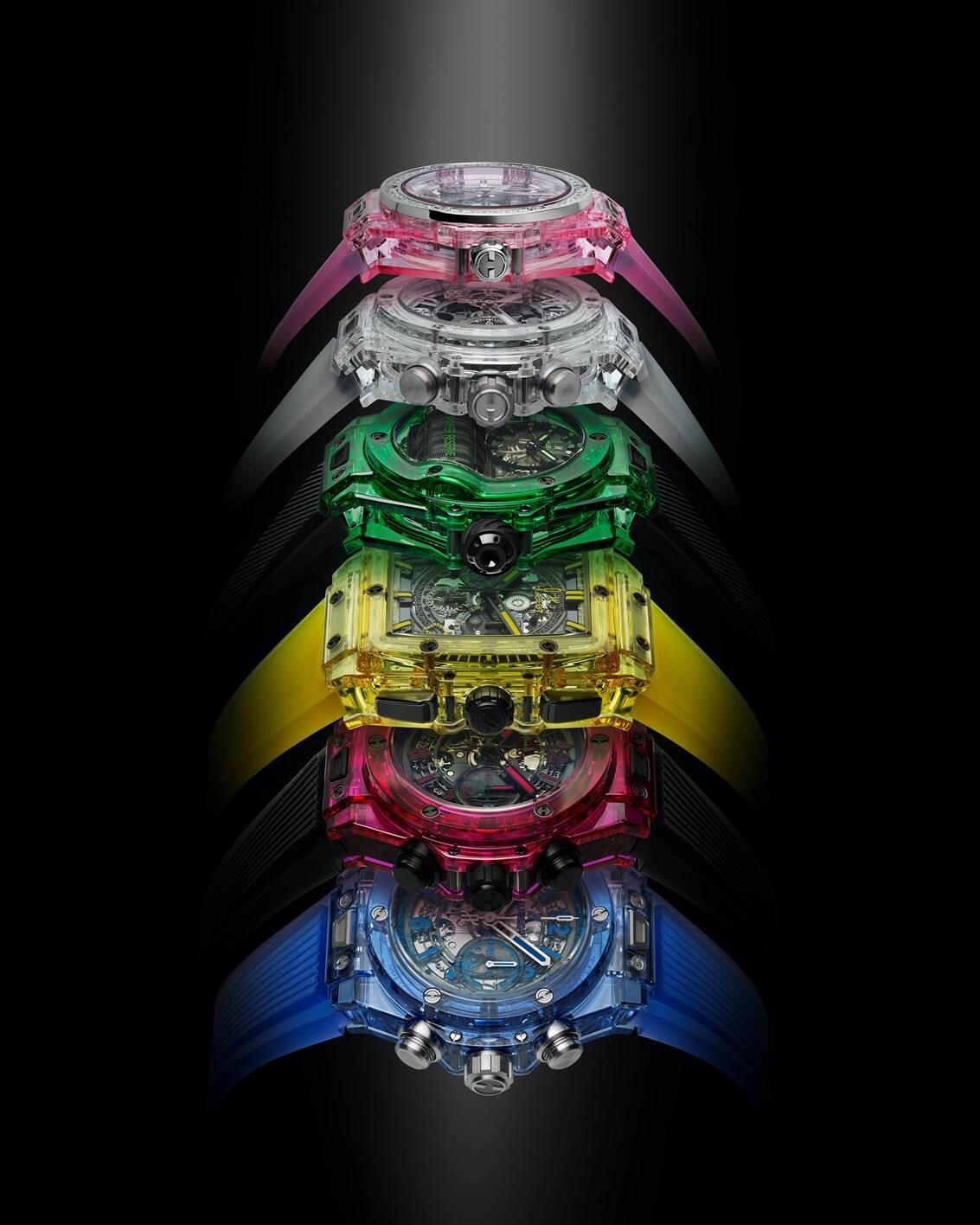
Hublot Manufacture in Nyon, Switzerland.
In a world where many watch brands boast centuries of history, the highly successful Swiss watch brand Hublot is relatively a baby. Founded in 1980 by Carlo Crocco, the brand was the first to use a rubber strap on a luxury 18-karat gold watch. It was revolutionary for the era, especially because the strap was often integrated into the watch. Today, to honor its 40thanniversary, Hublot worked with British fashion and industrial designer Samuel Ross to create an exhibit that showcases Hublot’s 40 years, its innovation, its materials, its collaborative world and its ambassadors. That exhibit, unveiled digitally recently and being replicated to some degree in boutiques, is an impressive presentation in Ross’s textured, balanced, stripped-down style. It embodies the motto that has defined Hublot since 2004, the Art of Fusion.
The exhibit – which translates to updated boutique interiors — witnesses watch stands made of poured concrete (which coincides with the launch of the Hublot Concrete Jungle New York watch today), shelving of steel, oversized frames with perforated surfaces, and more. The concept is to recreate the Art of Fusion – bringing mixed materials, minimalistic style and a play on colors, much like Hublot.

Hublot 40th Birthday celebration includes an exhibition about the brand and a new boutique concept by designer Samuel Ross.
A Brief Look At Hublot’s History
The display not only showcases the growth of the brand, but also its expansion into becoming a full manufacture and a global sensation. Following the intriguing introduction of rubber and gold, Hublot ticked along slowly in its early decades. However, when the legendary Jean-Claude Biver stepped into the picture as Chairman of the brand in 2004, Hublot’s success skyrocketed. So successful was the brand that in 2008, the LVMH Group purchased Hublot and began making big investments in its growth.
It was Biver who conceived of the “Art of Fusion” concept to blend the past with the future. Under his direction, the Big Bang watch was conceived, the brand became a full-fledged Manufacture and more. At the same time Biver took over as CEO, he brought current CEO Ricardo Guadalupe (CEO since 2012) into the fold and Guadalupe has been instrumental in growing the brand’s products and relationships.

Ricardo Guadalupe, CEO of Hublot
Hublot’s Worlds
Not only has Hublot brought some of the most famous sport legends on board as “friends” of the brand, but also it has expanded into the worlds of soccer, music, art, lifestyle and more. Together they embrace the brand’s philosophy of being unique, first and different. In addition to having Usain Bolt, the fastest man in the world, on its roster, Hublot also boasts relationships with Pele’ (the youngest player to win a FIFA World Cup), the legendary group Depeche Mode, virtuoso pianist Lang Lang, contemporary sculptor Richard Orlinski, tattoo- artist Maxime Plescia-Buchi (Sang Bleu) and Italian entrepreneur Lapo Elkann (Italia Independent) – each of which brings a unique and different point of view to the brand.
In fact, says Guadalupe, “With Depeche Mode, Hublot has raised more than $3 million in 10 years and gave access to clean water to 80,000 people, but we still have more to do. Currently more than 8 million peopled don’t have clean water.”
It was as early as 2006 that Hublot entered the world of soccer with the Swiss national team, first, and then continued to grow by partnering with UEFA and FIFA. The brand established its first “Hublot Loves” relationship with Hublot Loves Football. This has blossomed into Hublot Loves Art, and other realms. By 2011, Hublot and Ferrari struck up a relationship that has resulted in revolutionary watch developments. Other involvements come in the world of boxing and gastronomy.
Hublot’s Watches

Hublot Unico movement developed in house.
In fact, most of its relationships go way beyond the “friend” or the “world.” Most result in some pretty exciting new collections, such as with the MP-05 LaFerrari, the Richard Orlinski, Big Bang Sang Bleu and other watches that are co-designed. All timepieces are made in the brand’s workshops in Nyon, Switzerland, using in-house-made movements and new materials created in the brand’s own research and development laboratory. Naturally, the products would not be as successful as they are if the brand didn’t take risks – but those risks have paid off tremendously.
Not only does Hublot have its own in-house calibers like the Unico and Meca-10 and super-creative watch designs, but also it has developed some of the most unique materials in the world of watchmaking. Among them: Magic Gold (scratch-resistant gold), high-tech ceramic in bold colors such as red and blue, and sapphire for cases in yellow, red, blue and even pink, and a warmer-hued gold called King Gold.

Hublot King Gold is a blend of materials that creates a warmer shade of gold.
The list of fusions that result from its untiring quest to be first, unique and different goes on and on, but suffice it to say that the brand isn’t resting on its laurels. Just today, it released its first-ever fully concrete case, bezel and dial watch in the form of the Concrete Jungle New York (its second Concrete Jungle watch). We will have more news here soon. In the meantime, you can take a virtual tour of the 40th birthday exhibit by visiting Hublot.com.

Hublot’s sapphire watches





